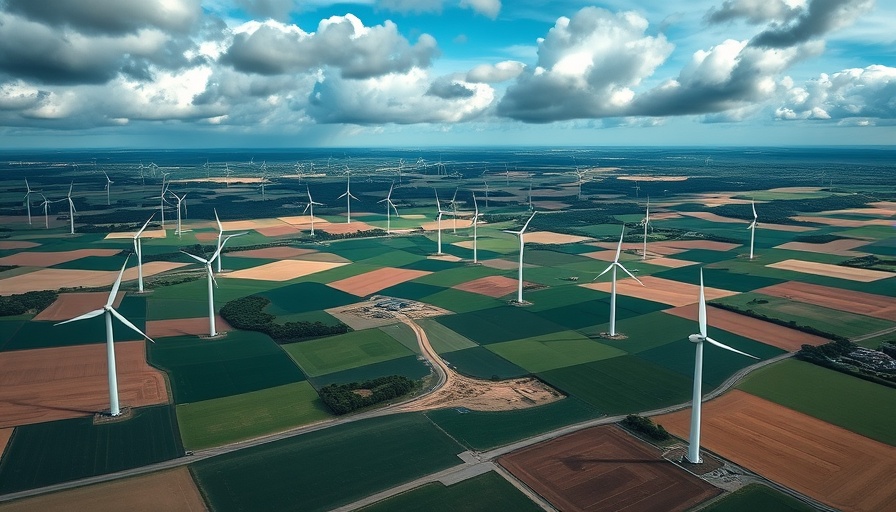
Why the Shift to Renewable Energy is Indispensable
The urgent call for a transition to renewable energy has been echoed by UN Secretary-General António Guterres, who recently stated that the global energy transition is now unstoppable due to "smart economics." This assertion highlights a fascinating intersection between economic sensibility and environmental stewardship. The latest reports from the International Renewable Energy Agency (IRENA) confirm that the plummeting costs of renewable technologies have positioned them as not only viable alternatives to fossil fuels but also as superior options economically.
Understanding the Economic Advantage of Renewables
The economic case for renewable energy is compelling. Reports demonstrate that in 2024, 91% of newly commissioned renewable power projects were more cost-effective than any new fossil fuel alternatives. The renewable energy sector contributed an additional 582 gigawatts (GW) of capacity, which helps avoid the significant expenses tied to fossil fuel consumption, amounting to approximately $57 billion. This trajectory suggests not only a more sustainable energy future but also considerable savings for governments and consumers alike.
Current Trends in Renewable Energy Costs
Cost reductions in renewable energy technology have been dramatic. IRENA data shows that 96% of new solar and wind projects came in cheaper than new coal and gas plants. In 2024, the global averages for solar photovoltaic (PV) and onshore wind energy costs were recorded at $0.043 and $0.034 per kilowatt-hour respectively—figures that illustrate a significant economic edge. Meanwhile, despite minor cost increases due to inflation and supply chain challenges, IRENA anticipates that technological advancements will continue to drive prices down in the long term.
The Fast-Paced Growth of Renewable Energy Capacity
The growth of renewable energy capacity has been nothing short of extraordinary. Between 2015 and 2024, there has been a staggering increase of around 2,600GW in renewable energy, representing a 140% growth. In contrast, fossil fuels have only seen a 16% increase, totaling about 640GW. In 2024 alone, renewables accounted for 92.5% of global electricity capacity additions, underscoring a significant shift toward sustainable energy practices worldwide.
Environmental and Social Benefits of Renewable Energy
Shifting to renewable energy sources equates to more than just economic advantages; it also embodies a commitment to environmental conservation and social responsibility. As we reduce our reliance on fossil fuels, we engage in sustainable practices that help mitigate climate change. This transition supports biodiversity by minimizing habitat destruction usually associated with fossil fuel extraction.
How This Transition Can Shape Our Future
Guterres aptly noted, "Fossil fuels are running out of road; the sun is rising on a clean-energy age." This is not just rhetoric—it's a reflection of changing consumer preferences and corporate policies that increasingly favor eco-friendly products and technologies. The surge in jobs related to renewable energy and sustainable practices represents a critical pivot for future economic growth, pushing towards a greener economy that invites innovation and environmental accountability.
Contributing to the Sustainable Future
As individuals, it is imperative that we support and advocate for policies that promote renewable resources and sustainable practices. Choices such as investing in eco-friendly products, participating in community gardens, or adopting a vegan lifestyle can have smaller yet significant impacts in the quest for a more sustainable society. Embracing green technologies not only lessens our carbon footprint but also actively participates in the collective movement towards sustainable development.
The shift to renewable energy is indeed a moment of opportunity. It's a call to action for consumers, businesses, and governments alike, to invest in a future that prioritizes sustainability and resiliency in the face of climate change. Start making eco-conscious choices today to ensure a cleaner, greener tomorrow!
 Add Row
Add Row  Add
Add 



Write A Comment